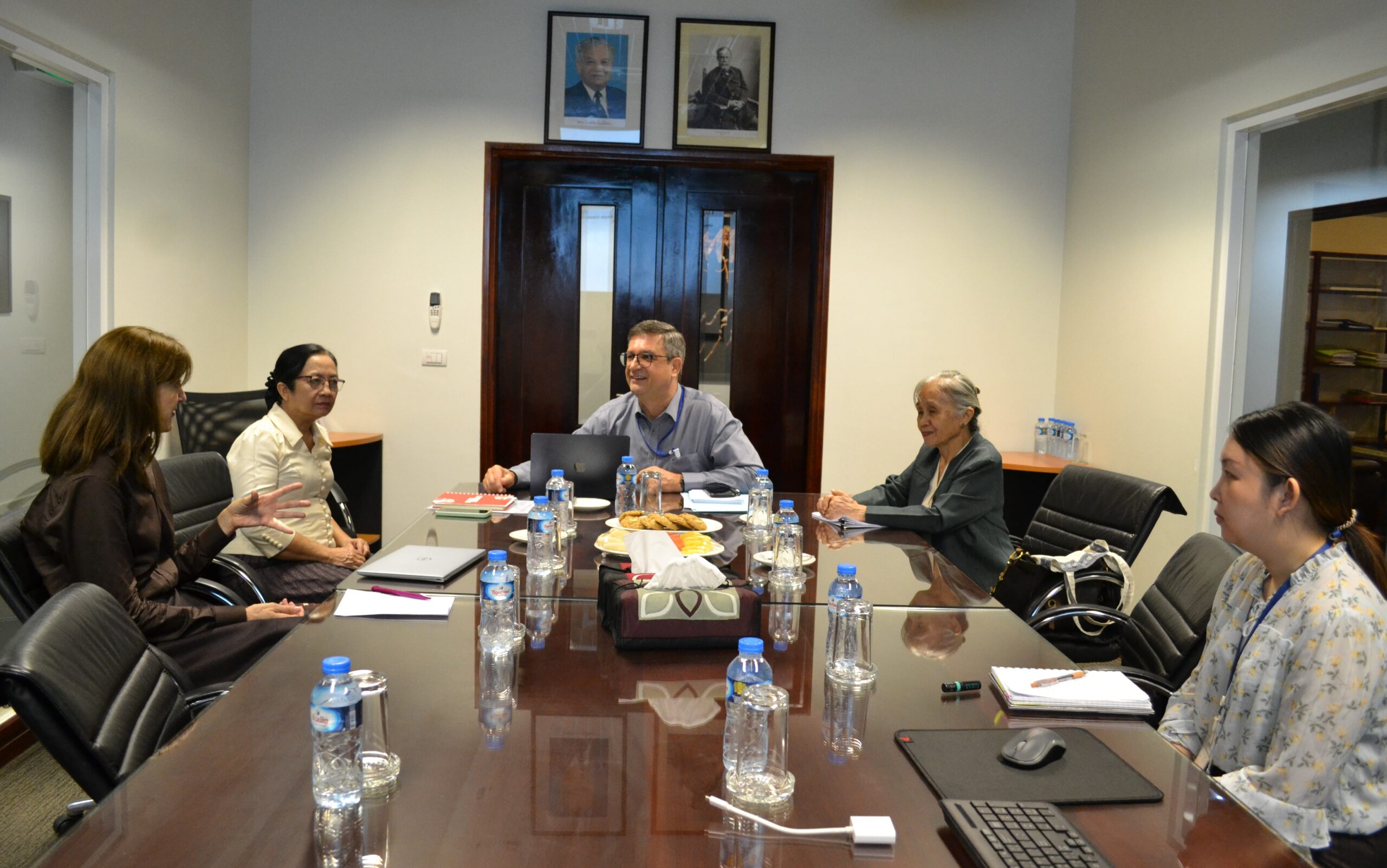Mosquito-borne diseases in rubber plantations: from Lao PDR to Côte d’Ivoire (Yersin project)
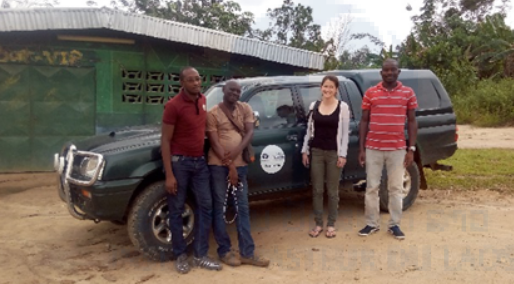
Project coordinator: Dr. Paul Brey and Pr. Mireille Dosso Global project manager: Dr. Julie-Anne Tangena
Member of staff: Dr. Bernard Kouadio Allali, Dr. Ibrahima Zanakoungo Coulibaly, Issouf Traoré, Dr. Phoutmany Thammavong and Somsanith Chonephetsarath
Summary
The goal of the Yersin project is to assess the potential risk of vector-borne disease infections occurring in rubber plantations and to provide clear recommendations on how to protect the population against these infections. As we are nearing the final half year of this project, we have made great strides in achieving this goal. During the past six months, the final months of fieldwork were completed. All necessary data has now been collected and analysis is being finalized for the identification of recommendations in Côte d’Ivoire. In the next six months these recommendations will be communicated to the rubber plantation stakeholders, including the Health department and Agricultural department. In Lao PDR, the communication of recommendations was started in April 2017. A national stakeholders meeting was organized to present our recommendations to important stakeholders. Furthermore, the recommendations are currently being emitted weekly on several radio stations. Focus of the final half year will be on comparing the vector data from rubber plantations in Lao PDR and Côte d’Ivoire to identify parallels. This information will be used to write general recommendations for the rubber plantation stakeholders, which will be translated into a flyer and a folder for distribution. Additionally, we will be submitting several scientific papers on the data collected in Lao PDR and Côte d’Ivoire.
Côte d’Ivoire
Adult survey Côte d’Ivoire
A great amount of adult mosquito data have been collected by the Yersin team in Côte d’Ivoire from the end of 2015 to the end of 2016. During 20,736 hours of collection a total of 10,253 adult mosquitoes were collected. A majority were female mosquitoes (82%, n = 8,455). Mosquitoes were identified to 77 different species, of which a majority were non-vector species. The distribution of the different mosquito genera in the four habitats different significantly (Figure 1). The two rubber plantations showed similar distributions with a high diversity of mosquito genera. Contrastingly, in the two different village habitats a high proportion of mosquitoes were Culex, with a low diversity of other genera. Interestingly, the number of genera were higher in the villages close to the rubber plantations compared to villages away from the plantations. This could be related to movement of mosquitoes from the rubber plantations to the villages. How this impacts the risk of vector-borne diseases in the villages close to rubber plantations compared to villages away from rubber plantations is currently being investigated.
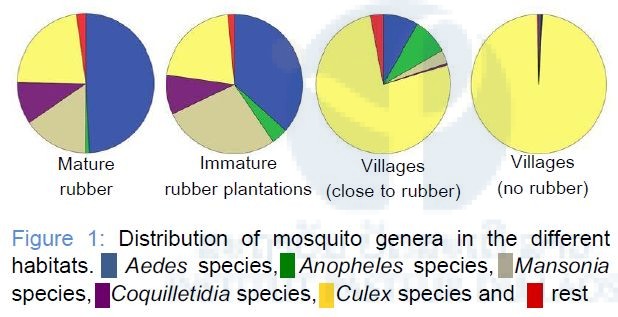
Although the total number of different vector species collected was low (~10 species), the vector mosquitoes did comprise 21 % of the total number of female mosquitoes collected. The important malaria vector An. gambiae s.l. was identified. Although malaria is highly endemic in the area, number of collected malaria vectors was low in all habitats (Table 1). It seems the limited number of malaria vectors are highly efficient at spreading the disease. Furthermore, the arboviral vectors Aedes aegypti, Ae. africanus, Ae. luteocephalus, Ae. metallicus, Ae. opok, Ae. simpsoni and Eretmapodites chrysogaster were collected (i.e. yellow fever, Rift Valley fever and dengue vectors). Interestingly, a majority of the arboviral vectors were collected in the rubber plantations with low densities collected in the villages. Similar to Lao PDR, the rubber plantations in Côte d’Ivoire provide an important habitat for arboviral mosquitoes. We are now comparing mosquito and human behavior data in the rubber plantations to identify ways to decrease vector exposure risk.
Table 1: Distribution of vector species in the four different habitats

Larval survey
Vector-borne diseases, such as malaria and yellow fever, cause considerable morbidity in Côte d’Ivoire. The traditional prevention methods of long-lasting insecticide treated bed nets and indoor residual spraying with insecticides is not sufficient to control the diseases. All mosquitoes have their immature stages in waterbodies, with species differing in their preference of different water containers. For the control of mosquito-borne diseases, it is important to identify the main breeding sites of the vector mosquitoes in the different habitats. Controlling the immature vector species decreases the number of adult vector mosquitoes that emerge and consequently the number of disease cases. Larval source management has been identified by the World Health Organization as an important supplementary measure. Larval source management entails the removal of waterbodies, covering waterbodies or treated them with insecticides. This method is particularly important since some of the vectors are exophilic and exophagic, meaning the mosquitoes feed and rest outdoors where the traditional methods are not effective.
Larval collections were done between January 2017 and July 2017, surveying each of the 12 habitats (four habitats x three study sites) five times. These are the same habitats that were previously surveyed during the adult study. In each habitat a hundred square meter area has been surveyed for the presence of waterbodies. All waterbodies encountered were identified with a unique number. The position was recorded with a handheld Global Positioning System (GPS). Detailed information of visual waterbody characteristics were also collected. The diameter (< 10 cm, 10-100 cm, >100 cm) and volume (< 5 mL, 5 mL – 50 mL, 1 L – 5 L, > 5 L) of each waterbody was estimated. Water depth was measured using a ruler. Water movement was noted by measuring the time a Post-it® (3M Company, 73 cm by 73 cm) moved five meters. It was noted if the waterbody was in the shade during the day (sunlit, sometimes shade, always shade). Furthermore, presence of submerged, emergent or floating aquatic plants was noted.
The presence or absence of immature mosquitoes, other invertebrates, tadpoles and fish were determined by one to 10 dips (depending on the habitat size) with a standard 350 ml dipper (Bioquip, California, USA). Small waterbodies were surveyed using a 5 ml pipette. In medium and large waterbodies dipping was focused on tufts of grass and other vegetation where larvae often aggregate. Collected water was emptied in a larval tray (34.3 cm x 25.4 cm x 3.8 cm, Bioquip, California, USA) and examined for mosquito larvae, pupae, other invertebrates, tadpoles and fish. If any vertebrate or invertebrate was found in a waterbody, to collect more samples these waterbodies were surveyed for an additional 10 minutes using a fine net and dipper. All mosquito and other invertebrate specimens were transferred to separate see-through cups with a lid and transported back to the field laboratory for further identification. In the field laboratory, mosquito larvae from each waterbody were transferred to larval trays. The mosquito larvae were separated into anophelini, aedini, culicini and others. Mosquitoes were then identified to early stage larvae (1st and 2nd), late stage larvae (3rd and 4th stage) or pupae. After basic identification, mosquito larvae and pupae from each waterbody were transferred to a breeding bowl covered by netting. Mosquito larvae were fed ground dry cat food every two days. All emerged adult mosquitoes were morphologically identified to species. Invertebrates collected in the field were identified using a stereomicroscope with 10 × magnification and a standard identification key for the British freshwater invertebrates, to the following taxonomic groups: beetle larvae (Coleoptera), beetle adults (Coleoptera), dragonfly and damselfly larvae (Odonata; suborder Anisoptera and Zygoptera), may fly larvae (Ephemeroptera), larvae of non-biting midges (Chironomidae), phantom midges (Chaoboridae), diptera larvae, waterflea (Cladocera), Ostracods and waterbugs (Heteroptera).
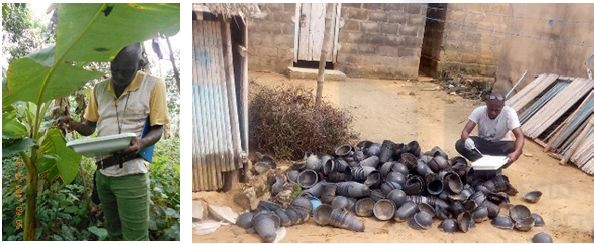
During the surveys a total of 1,660 water bodies were identified, of which 64 % were positive for immature mosquitoes (1,057/1,660). About 35 % of the positive waterbodies were discarded plastic, with another 25 % latex collection cups (both with and without latex; Figure 2). These water bodies are important to control to decrease mosquito densities in our study area. Looking specifically at different habitats, in the mature rubber plantations 83 % of water bodies contained immature mosquitoes (349/422; Table 2). A similarly high positivity rate was found in the immature rubber plantations (72 %,140/194; Table 2), although the total number of waterbodies was half. These results indicate that there is still a lot to gain from implementing larval control in the rubber plantation habitats, especially in the mature plantation areas where rubber workers regularly reside. In the villages next to the rubber plantations 54 % of water bodies were positive for mosquitoes (471/875; Table 2), with a similar positivity rate in the villages away from the rubber plantations (57 %, 97/169; Table 2). While proportions were the same for the two village habitats, five times more waterbodies were identified in the villages close to the rubber plantations. We are investigating the reason behind this difference between villages. The identification of the important waterbody types will be used to design research based vector control strategies, which will be communicated with our other recommendations. The focus of our recommendations will be on achieving sustainable and cost-effective larval control by organizing community-based mosquito source reduction activities.
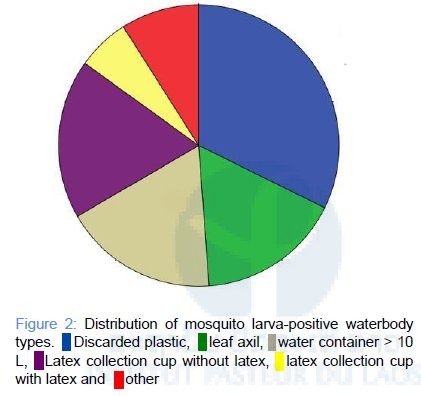
Table 2: Distribution of vector species in the four different habitats
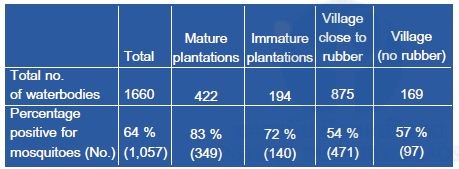
The social study in Côte d’Ivoire
Three social studies have been conducted in Côte d’Ivoire to collect data on local human behavior. The participatory rural appraisals were conducted last year to extract general behavioural patterns of the villagers and rubber workers. The participatory rural appraisal data is currently being analyzed for trends in human behaviour. This is qualitative data, which can be useful in describing general behaviour trends in the population. The data will be combined with the adult survey to understand when and where rubber plantation workers (and the local population) are exposed to vector mosquitoes. Furthermore, in May 2017, Focus Group Discussions (FGD) were conducted by social scientists and the Yersin team in Dabou district. A total of twelve FGD have been conducted in the three different villages (Kotokodji, Agnimangbo and Adangba Ebi) of our study area. Discussions were held separately for adult male, adult female, young male (<18 years) and young female (<18 years) groups. The data is currently being analysed by social scientists to identify the most important methods with which our study recommendations can be communicated back to the local population. Apart from the FGD, under supervision of the Yersin team, the social scientists also conducted a human behaviour survey in May 2017. This survey has been done to collect quantitative data on the local human behaviour. Combining the results of both the participatory rural appraisals and surveys, we will identify both similarities and differences in the behaviour of rubber workers and villagers. This information will be used to identify risky behaviour for vector-borne diseases.
Communication of recommendations in Côte d’Ivoire
Stakeholders meeting
A stakeholders meeting will be organized in October 2017 to discuss our results and recommendations with the local population, governmental stakeholders and, if possible, with the rubber industry representatives. We hope to have lively discussions with all participants regarding the current vector-borne disease activities, difficulties and possible improvements. The importance of this meeting will be to stress the cooperation necessary between industry, Health departments and Agricultural departments.
Master of Science II degree
We are happy to announce that Issouf Traore, with great supervision, has been awarded a Master of Science II degree from the Université Alassane Ouattara de Bouaké. He has been working as part of the Yersin team in the field, collecting both entomological and social data. He has used a small part of this data to publish a thesis on the mosquito dynamics in the study area, in cooperation with the Centre d’Entomologie Médicale et Vétérinaire. He has successfully conducted a defence, after which he was awarded his degree. This awarding is an important step in his scientific career and has strengthened the capacity of the unit in Côte d’Ivoire further.
Scientific publication
We are currently in the final stages of data analysis for the adult mosquito survey. We have, furthermore, started writing the scientific paper attached to this data. We hope to submit the paper before the end of this year.
Lao PDR
The ‘personal protection methods’ comparison study
Although the massive deployment of long-lasting insecticide treated nets (LLINs) and indoor residual spraying (IRS) has contributed to a decline in malaria a substantial amount of residual transmission outside of the home, where LLINs and IRS have limited impact. This is also true for many arboviruses where transmission occurs outdoors. Personal protection methods may be an effective way of protecting people against mosquito-borne diseases when outdoors. However, few clinical trials of topical repellents, have been shown to be protective against malaria, probably because of lack of compliance. It is therefore important to identify protective methods that will result in high user compliance. Here we assessed the protective efficacy of treatments that could be acquired locally in Laos PDR, and permethrin-treated clothing, which cannot. In addition we carried out studies on the acceptability of each method. The objectives of this study were to identify the methods which best protect people against outdoor biting mosquitoes and determine which are socially acceptable.
The study was conducted in Xieng-Ngeun district, Luang Prabang province, northern Lao PDR from June to August 2015. Secondary forest next to Silalek village (19°37’04.57”N 102°03’27.67”E) was selected for the day-time catches, due to the high density of the main dengue vector in the area, Aedes albopictus [1]. Evening catches were done next to the primary school of Thinkeo village (19°41’08.27”N 102°07’12.99”E), where the highest density of malaria vectors were found [2]. Studies on mosquito-borne disease incidence in the areas are limited, with district health records only showing local dengue transmission. The Ae. albopictus mosquitoes from our study area were resistant to DDT and malathion, and susceptible to deltamethrin and permethrin. The insecticide resistance status of malaria vectors in the area is unclear. However, in the provincial capital Luang Prabang, located 50 km from the study area, suspected resistance of Anopheles maculatus s.l. to permethrin was identified in 2015 [3].
Entomological comparison study
To compare the protective efficacy of six treatments against outdoor-biting mosquitoes, human landing catches were carried out from June to August 2016. The treatments tested were: (1) permethrin-treated short overalls (0.054 mg/m2, Insectshield, Greensboro, USA), (2) permethrin-treated long overalls, (3) untreated short overalls and para-menthane-3,8-diol (CARE PLUS anti-insect natural spray 19.2 % para-menthane 3,8-diol (PMD)) repellent, (4) permethrin and PMD-treated short overalls, (5) untreated short overalls with portable metofluthrin coils (Metofluthrin coils with 0.015% active ingredient from Fumakilla LTD (Bangkok, Thailand)) worn on the hip and (6) untreated long trouser overalls. Untreated short overalls served as the control. The treatment of the overalls were blinded for the participants. The PMD repellent was applied once at the start of the study, at a rate of three dose (sprays) per lower leg.
Human-landing catches comparisons were made from 12.00-18.00 h during the day in Silalek forest and from 17.00-23.00h in the evening in Thinkeo village; periods when exposure to mosquitoes was high and the local villagers active [1]. Fourteen men 18-39 years old were recruited as collectors from each village. The study strictly followed the national guidelines. The study protocol was approved by the ethics committee of the Ministry of Health in Lao PDR (approval number 012/NECHR issued 01-07-2016), the ethics committee of the department of biosciences, Durham University (issued 21-07-2016) and by the comité de recherche clinique de l’Institut Pasteur (approval #2015-044 issued 09-07-2016). Each undertook a health check and those with a previous infection of dengue were excluded from the study. A total of 32 participants gave informed written consent. All participants were offered malaria chemoprophylaxis for the duration of the study, were vaccinated against Japanese encephalitis, provided with a long lasting insecticide treated net (LLIN) and provided with four months health insurance.
For each collection 14 participants tested six treatments and one control (i.e. two participants simultaneously tested one method). The study at was based on a 14 x 14 Latin square design to provide a balanced design. At the end of the study each participant had used each treatment twice. Collectors captured mosquitoes landing on their lower legs using an aspirator, with those working in darkness wearing a head torch. Mosquitoes were collected in a cup covered with netting. Collectors sat on a small chair underneath a small makeshift plastic cover. Every hour, mosquito collections were done for 45 minutes with a 15 minute break. Two supervisors were present to assist the collectors and check the protocol was followed.
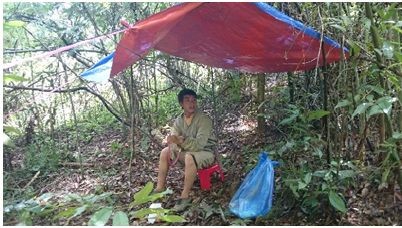
Cone test
World Health Organization cone tests were conducted in the laboratory to determine the knock down (KD) rate and mortality of Ae. albopictus and Ae. aegypti strains after exposure to the permethrin-treated and untreated overalls [4,5]. This experiment was done to determine; (1) the loss of efficacy of permethrin-treated clothing after use in the entomological comparison study, (2) the difference in efficacy between treated and untreated clothing, both before and after use in the field. The pyrethroid susceptible Ae. albopictus and Ae. aegypti were reared in our laboratory under optimal conditions of 25°C ± 2°C and 80% RH with a 12: 12 h photoperiod. The Ae. albopictus mosquito strains were collected in July 2015 from Phomphao village, Luang Prabang province and Souanmone village, near Vientiane city and have been reared under optimal conditions ever since. The Ae. aegypti mosquitoes were the USDA reference strain [6] which have been reared under optimal conditions since arrival in Laos in July 2014 from Kasetsart University in Bangkok, Thailand. Susceptibility status of the different strains were analyzed before the study in March 2016.
Four overalls were randomly selected from each fabric type; (1) new insecticide-treated overalls, (2) new untreated overalls, (3) field-used insecticide-treated overalls from Silalek, (4) field-used untreated overalls from Silalek, (5) field-used insecticide-treated overalls from Thinkeo and (6) field-used untreated overalls from Thinkeo. Cotton shirts were used as control. From each of the 24 overalls a 25 cm2 piece of fabric was cut for the cone tests. Four cones were placed on top of the fabrics. Batches of five unfed two to five days old female mosquitoes were exposed in the four cones. One of the four cones always served as a control. Female mosquitoes were exposed for three minutes and removed using a mouth aspirator. The mosquitoes were transferred into a holding cup covered by netting for 24 hrs with access to 10 % sugar solution. Knock-down was measured immediately after exposure (3 minutes) and one hour after exposure. Survival was recorded after 24 hrs [7]. If controls showed > 10 % mortality after one group of exposures, the experimental replicates were re-done. On each piece of fabric a total of 60 mosquitoes were exposed (i.e. 5 mosquitoes x 3 cones x 4 replicates). This totaled 240 mosquito exposures for each fabric type (60 mosquitoes x 4 overalls). Bioassays were carried out at 26 ± 2.5 °C and 65 ± 15% relative humidity (RH).
Social acceptance study
Questionnaires were conducted at the end of collection period among the 28 mosquito collectors. All questionnaires were anonymous with no sensitive information collected. They were asked to rate the different methods from one to seven for their user-friendliness, their protection against mosquitoes and their overall preference. Additionally we asked them questions regarding their financial willingness to purchase the personal protection methods.
Data analysis
The mosquito count data were analyzed using generalized estimating equations (GEE) with a negative binomial model with log-link function to estimate the difference in landing rates between the treatments and control (IBM SPSS statistics, version 20). A sub analysis was done for the dominant vector species in the afternoon and evening collections, and putative malaria vectors. For the cone tests, univariate analysis of variance (ANOVA) was used to identify if a difference existed between the 3 minutes KD, 1 h KD and 24 h survival rate of permethrin-treated clothing before and after use in the field. Additionally the difference between the permethrin-treated and untreated clothing was analyzed, again both before and after use in the field. Comparisons between predicted means for each treatment type were performed using an LSD post-hoc test with the significance level set at 0.001 % (5 divided by the 48 tests performed). Social acceptance study data were digitally recorded, transcribed and managed thematically in Excel 2013®.
Results
Protective efficacy
A total of 12,933 female mosquitoes, belonging to nine genera and 79 species, were collected throughout the study period. The most abundant species were Culex vishnui s.l. (n = 5,755) and Ae. albopictus (n = 3,025). During both the afternoon and evening comparisons, protection against female mosquitoes was highest for the short untreated clothing with mosquito coil. Protective efficacy was 92 % in the afternoon and 69 % in the evening. Protective efficacy was second highest for short treated clothing with repellent, with 68 % in the afternoon and 52 % protection in the evening. Long treated clothing resulted in 61 % protection during the afternoon and 43 % protection in the evening. Short untreated clothing with repellent showed 55 % protection during the afternoon and only 25 % protection in the evening. Short treated clothing and the long untreated clothing did not provide any protection.
Aedes albopictus was the dominant species in the afternoon, when 94 % of Ae. albopictus samples were collected (2,846/3,025). The protective efficacy of the different methods for Ae. albopictus was similar to the protective efficacy for the total number of female mosquitoes in the afternoon. Short untreated clothing with mosquito coil resulted in 92 % protection from Ae. albopictus, while short treated clothing with repellent showed 62 % protection. A protective efficacy of 54 % was identified for long treated clothing. Short untreated clothing with repellent showed 46 % protective efficacy. Both short treated clothing and long untreated clothing collections, compared to short untreated clothing, did not provide any protection against Ae. albopictus mosquitoes.
During the evening comparisons, Cx. vishnui s.l. was the most common mosquito, with a majority of this species collected during the evening comparisons (5,737/5,755). Short untreated clothing with mosquito coil resulted in 71 % protection, which was highest for all protection methods. The use of short treated clothing with repellent lead to a 54 % protection from Cx. vishnui s.l., long treated clothing resulted in 43 % protection and short untreated clothing with repellent resulted in 23 % protection. There was no difference in Cx. vishnui s.l. landing rates for the short untreated clothing compared to the short insecticide-treated clothing and long untreated clothing. A total of 273 putative Anopheles malaria vectors were collected during the evening and four during the afternoon. None of the protection methods resulted in any protection compared to the short untreated clothing.
Cone tests
Permethrin-treated clothing resulted in knockdown and mortality among laboratory reared Ae. albopictus and Ae. aegypti after exposure in the cone tests. A three minute exposure to the permethrin-treated fabric resulted in 20 % mortality. The treated clothing remained similarly effective after use in the field (all P > 0.001), except for a slight decrease in knockdown rates.
Social acceptance
All 28 mosquito collectors were aware of the risk of mosquito-borne diseases. They confirmed the necessity to protect themselves from mosquitoes, particularly in the forests (26 mentions), rubber plantations (21 mentions) and farms (18 mentions). Less than half the respondents, however, mentioned the use of personal protection methods (11/28), with the non-users mentioning as reasons ‘no money’ (8), ‘don’t know how to use (4), ‘don’t know where to buy’ (3) and ‘shop is too far’ (2). In general, the permethrin-treated clothing was positively reviewed. One participant mentioned the bad smell of the treated clothing giving him a headache and making him nauseous. Six collectors were bothered by the smoke of the mosquito coils. Even with the smoke nuisance, the short untreated clothing with coil was highly accepted by the participants, together with the long permethrin-treated clothing and short permethrin-treated clothing with repellent. Participants were willing to spend an average of 32.000 Lao kip (3.90 USD) per month on personal protection methods with a minimum of 10.000 kip (1.20 USD) and maximum of 150.000 Lao kip (18.10 USD) mentioned.
Communication of recommendations Lao PDR
Stakeholders meeting
On the 12th of May 2017 a stakeholders meeting was held at the Provincial Health department in Luang Prabang province. Important stakeholders from the district, provincial and country -level were in attendance from both the Ministry of Health and the Ministry of Forestry and Agriculture. Furthermore, the deputy head of the Center of Malariology Parasitology and Entomology (CMPE), members of the malaria unit, as well as a member of the Department of Communicable Disease Control (DCDC) were present to discuss the findings and recommendations. Important discussions were held regarding the data, the analysis and the subsequent recommendations. Furthermore, the stakeholders advised us on our communication plan, including the distribution of a short summary of our recommendations to the different stakeholders. A summary of our discussions during the stakeholders meeting has been published in the Provincial Health department journal, which is distributed throughout the province. Additionally, the meeting was broadcasted on national Lao TV, which is watched throughout the country.

The Yersin project on Radio RFI ‘Le voix du monde’
Many media outlets are interested in vector-borne diseases, such as malaria and dengue. One such example is RFI, a radio station to which approximately 34.5 million listeners around the world tune in every week. In a radio program focusing on ‘ Priorité santé ’ a special broadcast was made on the 15th of December 2016 regarding the dengue situation in Lao PDR. During this broadcast Dr. Paul Brey (Director of Institut Pasteur du Laos and principal investigator of the Yersin project) discussed the successful South-South cooperation between Lao PDR and Côte d’Ivoire, which has been achieved by the Yersin project supported by the Michelin Corporate Foundation. Dengue is a disease which is causing a high number of outbreaks in both Africa and Asia. Mosquitoes and disease pathogens know no borders. Sharing knowledge and experience between both continents is an important step in making vector control efforts more efficient and effective.
Link to broadcast can be found on the RFI-website, 16 minutes into the program:
http://www.rfi.fr/emission/20161215-dengue-laos
The Yersin project at Les Rendez-vous de Vientiane
On the 25th of January 2017, Dr. Paul Brey was invited as a panelist and speaker to a scientific panel discussion organized by Les Rendez-vous de Vientiane. Les Rendez-vous de Vientiane is a platform for sharing knowledge and discussing issues on economy, science, culture and sports between numerous stakeholders in Lao PDR. During the discussions Dr. Paul Brey discussed the Yersin Project supported by the Michelin Corporate Foundation in the context of a South-South cooperation between Lao PDR and Côte d’Ivoire. The importance of collaboration between both countries was highlighted.
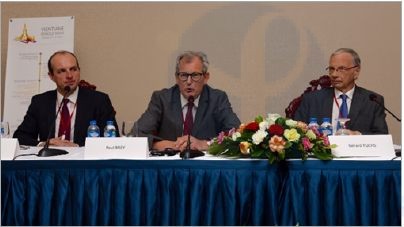
Radio messages
The results of the focus group discussions have highlighted the importance of radio messages. The radio is present in all households and even taken to the farmland and rubber plantations during the day. The radios are used by everyone to keep updated on the weather forecast, local news and country affairs. To reach the local population we have therefore record several short and simple messages in three main languages in the area; Lao loum, Khmu and Hmong. The message is focused on the important aspects of mitigation of vector-borne diseases for rubber workers:
1) Controlling immature stages of mosquitoes by turning latex collection cups upside down
2) Decreasing exposure to adult mosquitoes by wearing thick long-sleeved clothing while working in the plantations
3) Going to the health center when feverish
Since mid-July 2017, the messages have been emitted weekly on the Luang Prabang provincial radio and the ‘Tuesday radio show’ of the Ministry of Health. Furthermore, the message have been emitted weekly on the district radio and by a car with speakers from the Ministry of Health in our study area (Xieng Ngeun). In total our radio messages will be emitted seven times a week until the end of the rainy season in November 2017. The local population will therefore be exposed to the message during the peak of disease incidence.
Additionally, we have shared the radio messages with the Ministry of Health department in Vientiane capital for use in the southern provinces of Lao PDR. We hope the regular emission of the message will result in changes in the behavior of the local population. Although we cannot measure this scientifically, we plan to conduct several small competitions in which we ask questions to the listeners regarding the recommendations. The response rate will hopefully give a good indication of the reach of our messages throughout the Northern provinces. Winners will receive a Yersin project polo-shirt.
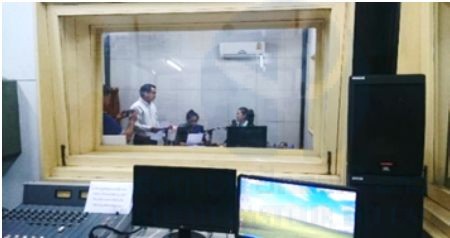
Scientific publication
The data of the personal protection methods has been analysed (see above) and the scientific paper has been written. The paper is now going through several rounds of improvement, with input from several experts, before it is submitted for publication.
Future activities
Côte d’Ivoire
+ Identification of recommendations; Analyse data of adult survey, larval survey and social studies to identify recommendations.
+ Communication of recommendation; Communicate recommendations to the local population and the government using methods identified during the social studies.
+ Scientific paper; The adult survey will be analysed for publication in a scientific journal
+ Stakeholders meeting; A stakeholders meeting will be organized in October to communicate our recommendations and, discuss the problems and solutions for successful vector control implementation.
Lao PDR
+ Scientific paper; Finalize publication on personal protection methods for submission.
+ Link results from Lao PDR to Côte d’Ivoire; Identify parallels and variances between data from rubber plantations in Lao PDR and Côte d’Ivoire
+ Communication of recommendations from comparison of the two countries; We will make a flyer which shows the main risks for rubber workers in rubber plantations (combining data from both countries). This flyer will be made for distribution among the local population; simple and to the point. Additionally, we will write health guidelines for the rubber plantations, specifically on mosquito control.
References
1. Tangena J-AA, Thammavong P, Malaithong N, Inthavong T, Ouanesamon P, Brey PT, Lindsay SW (2017) Diversity of mosquitoes (Diptera: Culicidae) attracted to human subjects in rubber plantations, secondary forests, and villages in Luang Prabang province, Northern Lao PDR. J Med Entomol doi:10.1093/jme/tjx071
2. Tangena J-AA, Thammavong P, Hiscox A, Lindsay SW, Brey PT (2015) The human-baited double net trap: an alternative to human landing catches for collecting outdoor biting mosquitoes in Lao PDR. PLoS One 10 (9):e0138735. doi:10.1371/journal.pone.0138735
3. Marcombe S, Bobichon J, Somphong B, Phommavan N, Maithaviphet S, Nambanya S, Corbel V, Brey PT (2017) Insecticide resistance status of malaria vectors in Lao PDR. PLoS One 12 (4):e0175984. doi:10.1371/journal.pone.0175984
4. World Health Organization Pesticide Evaluation Scheme (1998) Test procedures for insecticide resistance monitoring in malaria vectors. Bioefficacy and persistance of insecticides of treated surfaces. WHOPES, World Health Organization, Geneva, Switserland
5. World Health Organization (2016) Test procedures for insecticide resistance monitoring in malaria vector mosquitoes -2nd ed. The WHO susceptibility test for adult mosquitoes. Geneva 6. Kuno G (2010) Early history of laboratory breeding of Aedes aegypti (Diptera: Culicidae) focusing on the origins and use of selected strains. J Med Entomol 47 (6):957-971
7. World Health Organization (2011) Guidelines for monitoring the durability of long-lasting insecticidal mosquito nets under operational conditions. WHO, Geneva


